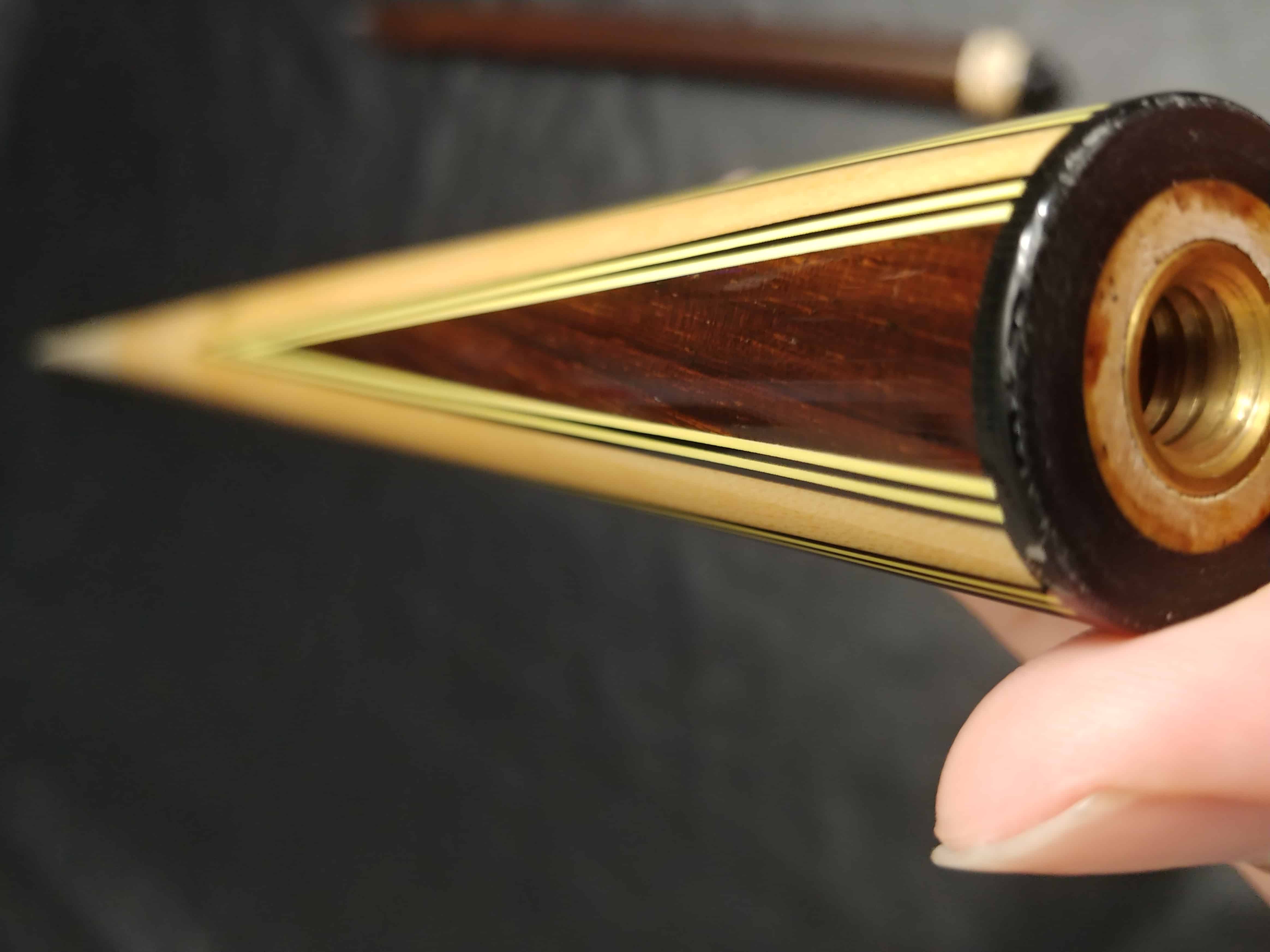

Even the terms that different people use to describe these characteristics (hard, soft, harsh, stiff, forgiving, well-balanced, etc.) are subjective and difficult to quantify. In general, it is difficult to tell if you would like a cue stick just by reading about it. Buying an expensive cue will not make you a better player. A good player can play well with any decent cue with a decent tip, assuming the player is familiar with the cue (i.e., it is the “Indian that is important, not the arrow”). Don’t keep changing equipment, thinking a new or different cue will make you a better player.

The choice of cue is not as important as some people think as long as you spend time to get accustomed to the cue. The most important advice concerning choices for both playing cue weight, tip hardness, and CB deflection is to pick something and stick with it so you can develop a complete and consistent feel for shot speed control and aim compensation when using sidespin. The following video covers many of the important things to consider: Otherwise, just pick something in your price range that looks and feels good to you.
a natural pivot length well matched to your preferred bridge length, especially with a break cue. a length or extensions (joint or butt) that are appropriate for your height (especially if you are really tall or “vertically challenged”). a stiffness and tip hardness resulting in your preferred “feel” and “hit.”. Even though you can learn to aim when using sidespin using any cue, an LD shaft can offer some advantages. the amount of CB deflection you prefer. an optimal or preferred weight for you, especially with a break cue. When selecting a cue to purchase, try to find a cue that has: 
It is best to have your own personal cue that will provide you with consistency.
Choose a cue weight that feels the most comfortable. You can check this by rolling the cue flat on the table (or at an angle with the middle of the cue on the cushion), making sure it doesn’t wobble too much. If it is, it won’t hold chalk and the tip won’t grip the cue ball very well (especially with off-center hits, intentional or not), which could result in miscues. Make sure the tip is not hardened and glazed-over on the surface. Make sure the tip and ferrule are firmly attached to the end of the cue, with no cracks in the ferrule or cue wood. When selecting a cue at a pool hall or bar, the basic things you should check include: What things are important in selecting a cue? Top 100 Pool Maxims, Sayings, and Quotes. Dave Vimeo Video on Demand Stream/Download Top 100 Tips, Tricks, Secrets, and Gems.







 0 kommentar(er)
0 kommentar(er)
